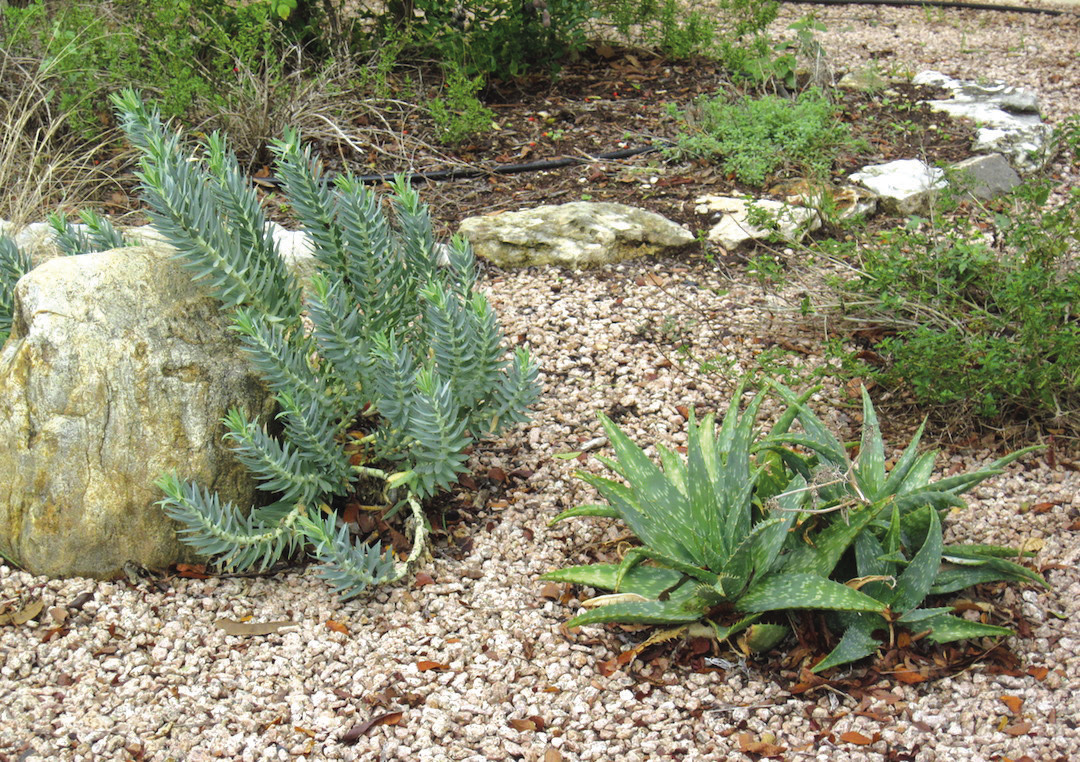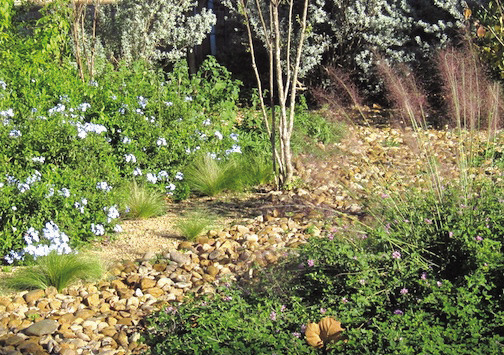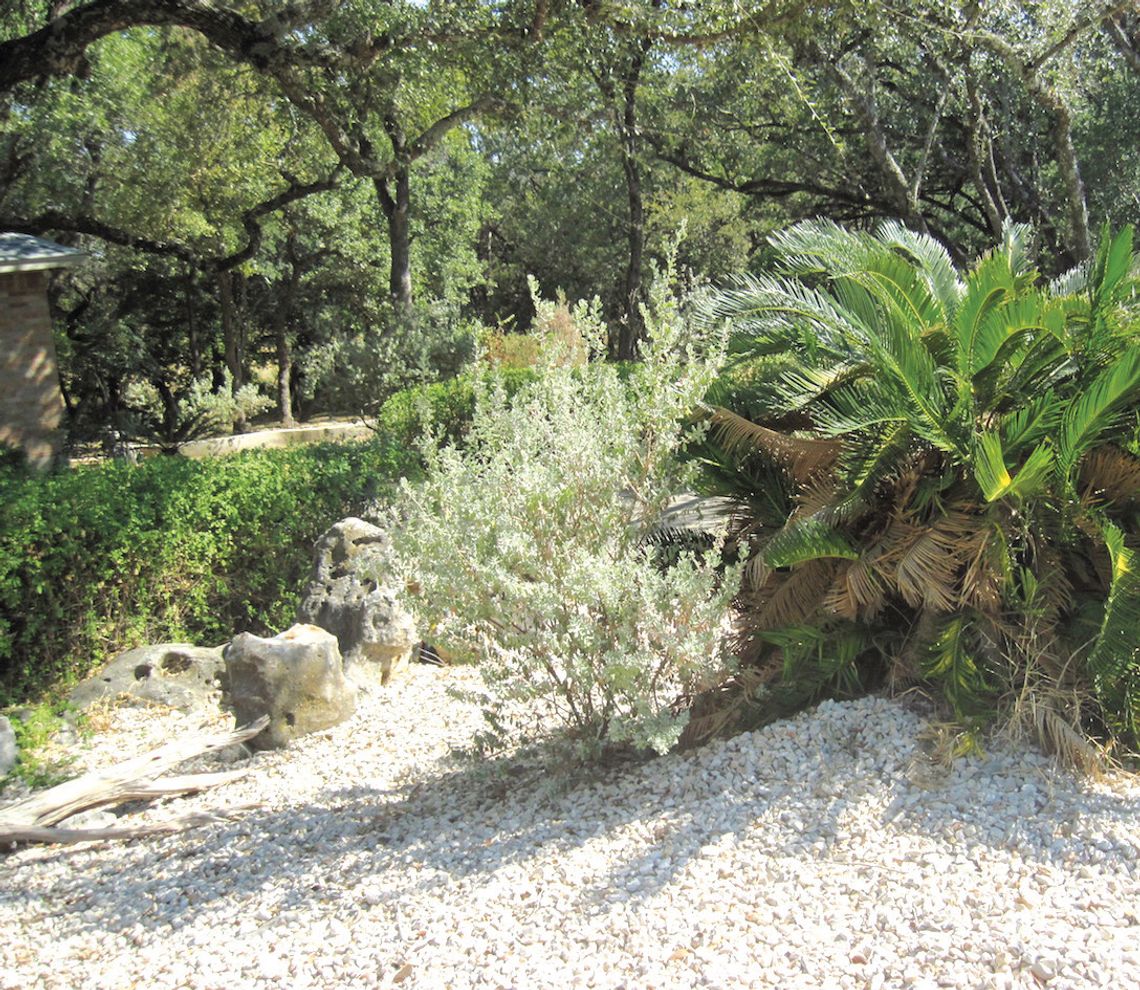Safeguard your yard against the cold
Winter weather is our February Yard of the Month feature, after multiple freezes and even an unusual snowfall in San Marcos. Unlike the extended freeze of February 2022, this winter’s chill has not threatened sustainable landscapes, but protection from cold is still a serious concern. One simple solution is a thick blanket of leaves insulating plant roots and covering planting beds instead of just a thin sheet of mulch. Leaf litter also provides a place for beneficial insects to overwinter so they continue as garden allies when spring arrives. Even browned hollow plant stems offer shelter for insect pupae and eggs waiting for spring.
Some homeowners cover plants during frigid temperatures, while others rely on hardy native plants to survive, or plan on spring pruning to address damage and encourage new growth. Both practices are reasonable options for home landscapes, depending on a gardener’s goals and patience. But yards are also part of our local environment. Any sustainable yard is also a year-round home for “plant partners” - pollinators and beneficial insects. Birds and beneficial insects control insect pests without use of chemical treatments that may harm the environment.
Although some wildlife are gardening partners, non-native plants may need protection from visitors such as deer. Tall fencing around backyards is a common solution, but even a lower barrier may discourage these browsers. Their vision requires seeing a clear area to land after jumping a fence, so large plants in that area discourages entry. Even without fencing, native plants are generally resistant to deer. For example, deer ignore irises, but non-native flowering plants become “deer candy” unless protected by wire cages or other barriers.



Water remains a concern for landscape plants in winter weather. Well-hydrated plants withstand freezes much better than dried-out beds, and thickly- mulched beds help retain soil moisture. Water management is always part of landscaping in central Texas, given the double challenge of floods and drought. Controlling rain runoff with diversions or drains prevents soil erosion and damage to structures, and collecting rainwater for plants reduces irrigation costs. Providing a water source for beneficial wildlife (birds and pollinators) can be as simple as a drip fountain or birdbath, or as ambitious as a garden pool.
Along with water management, sun or shade exposure affects planting locations. Texas summer sunshine is intense, and many plants benefit from partial shade in a bed surrounding a tree or large shrub. However, succulents, grasses, and shrubs can thrive surrounded by gravel or crushed stone, which also insulate soil from heat and cold.
Besides practical concerns about plants and water, landscapes reflect a homeowner’s preferences, such as continuous ground cover, large planting areas, or separate edged beds and containers. Turf grass has long been the default for front yards but is not sustainable in drought conditions and requires regular maintenance. A mixture of native grasses and low-growing plants such as horse mint needs minimal water and covers bare soil throughout the year. This native mix can also cover walkways between planting areas, or paths can be defined with mulch (leaves or wood chips, rock or gravel) or concrete pavers.









